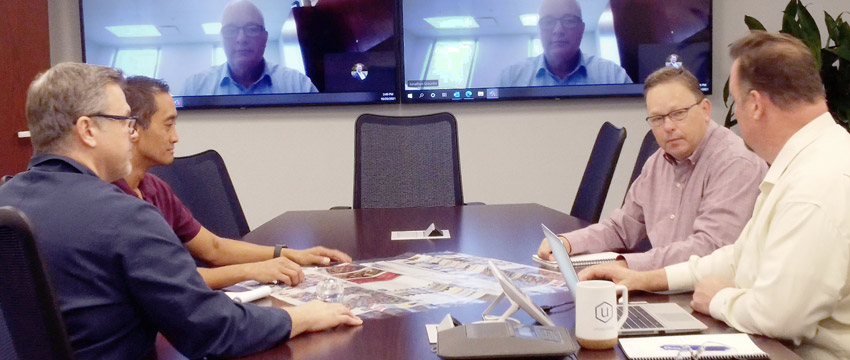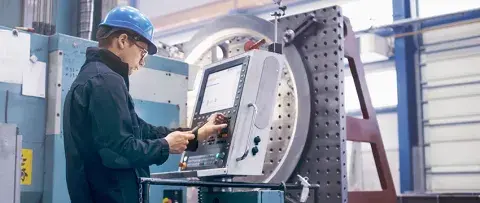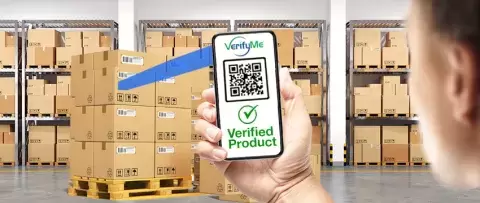Is Supplier Innovation & Co-Development a Winning Partnership?
Why Brand Managers and Packaging Leaders Should Embrace Collaborative, Co-development, and Innovation with Suppliers
Brand owners and packaging leaders who partner both inside and outside their organization increase the value provided to their customers and their bottom line. While market volatility and economic changes have an obvious impact on an organization’s success, so too does their ability to innovate. Long-established companies have been disrupted practically overnight by new technologies or business models. In fact, the life expectancy of an S&P 500 company has gone from 60 years in the 1950s to less than 20 years today1.
Traditionally, businesses have tasked their internal Research & Development teams to drive innovative new products, services, and opportunities to disrupt the status quo and result in a competitive advantage. As one of the world’s largest manufacturers of high-performance printing inks and coatings for commercial, packaging, and digital print applications, we believe a collaborative development and open innovation model provides brand owners and packaging leaders the opportunity to work with internal and external partners to increase the value provided to their customers, and deliver significant benefit to their brand as well as their bottom line.
Understanding Customer Value
Without customers, we don’t have a business. It’s a well-known business truth that in order to secure and—more importantly—retain one’s leadership position having a distinct competitive advantage is a must. In recent years, with the growth of the digital age and customer access to information, another truth has emerged: sustained competitive advantage is dependent on the value delivered to one’s customers. In order to consistently deliver on the ever-changing customer value expectations, we must be proactive and consistent in our identification of trends and creative in our strategic response.
Even the best companies can overlook what hindsight shows us to be obvious customer value winners. Kodak’s research lab invented the first digital camera in 1975 but did not pursue it because they were afraid it would cannibalize their film business. Instead, Sony developed a different prototype and won the future of digital photography away from Kodak. Another example is the development of the personal computer. Xerox actually developed the first personal computer but didn’t invest enough in the technology which allowed Steve Jobs and Apple to seize the opportunity for themselves2.
The last several years have seen an increasing number of large organizations overcome the “not invented here” mindset, thinking like start-ups, and looking beyond the business’s four walls in order to better understand their customers. For example, in 2019, Coca-Cola unveiled their KOlab facility in order to collaborate with retail and restaurant customers to innovate new ways of reaching them. The lab aims to be a space where Coca Cola can build relationships with its restaurant and retail customers to discover new ideas3. More recently, Mondelēz International’s innovation and venture hub launched CoLab, a collaborative program for U.S.-based early-stage, better-for-you snack brands to drive mutual growth. The lab is focused on addressing the need for healthier snacking alternatives. Mondelēz will provide tools, technologies, access to company leadership and industry expertise while gaining insights, capabilities, and potential investment opportunities from the start-up companies.
The Emphasis is on Collaboration
Some companies take an insular view of innovation and they tend to focus on building instead of partnering. They may get hung up on the proprietary nature of innovation and the intellectual property involved. That’s all well and good and has its place, but at INX International, we place much more emphasis on solving customer problems through collaborative development with supply chain partners and brands.
There are many real-world examples of collaborative development. The nature of creating and manufacturing a product’s package is in essence a collaborative, development model: The brand creates its product and works with a packaging provider to produce the package who works with providers of different substrates, coatings, and inks to use in the package. The packaging, ink, and coating suppliers provide material and process innovations to the brand. Tetra Pac, a provider of food packaging, announced in January of this year that they were creating “a new collaborative innovation model with leading paperboard producers, a move aimed at tackling the food packaging industry’s sustainability challenges” 4. The company wants to bring together not only producers and suppliers, but also research institutions, universities, and start-ups in an attempt to find solutions.

Since 2019, INX has been engaged in a collaborative development model working with product authentication and customer engagement experts, VerifyMe, and a major beverage brand owner who was experiencing counterfeit and brand protection issues. INX developed the ink used on the beverage cap and incorporated VerifyMe’s marking technology, and the beverage cap was successfully tested for protection against counterfeiting. This partnership may result in VerifyMe’s security technology being implemented in up to 95 percent of the global packaging, tags, and labeling industries.
To learn more about brand protection packaging read our blog post: Protecting Your Packaging and Your Brand with Security Inks.
.
Benefits of a Collaborative, Co-Development Model
I don’t think any of us would hesitate to state that supplier relationships and collaboration are vital to ensuring the success of our business. If anything, this last year has heightened that awareness as retailers were challenged to get inventory with limited availability to the locations where customers were buying in droves (think toilet paper, sanitizing sprays, and wipes, and more). Obviously, collaboration with suppliers can determine whether a company has adequate supply, yet the benefits of a collaborative, development relationship go well beyond that relationship.
-
Enhance your resources. Innovation is often hampered by resource constraints - whether it’s too few people or too little time. Many organizations talk a good game yet struggle to find the people, assets, and management attention to support their innovation efforts. That often forces those teams that are dedicated to innovating to focus on short-term wins in order to justify their existence and hope for more dollars and personnel. Collaborative development often results in a more efficient and aligned set of resources who are focused on bringing a customer-valued solution to market.
In addition to having a small in-house team dedicated to innovation, some organizations may not have industrial designers on staff or an in-house testing lab. We know from conversations with our customers that the ability to work with a supplier who has a prototyping and/or pilot facility brings tremendous value to the supplier-brand relationship. Design to execution services such as these are differentiators in accelerating the customer feedback loop which can improve time to market.
Engaging in a collaborative development model of innovation can also uncover new opportunities to optimize and/or reduce your costs. The expertise your suppliers bring to the project may result in improved sourcing opportunities, optimized universal designs, and increased manufacturing efficiencies to name a few. Companies can also realize shorter development times which saves both time and money.
-
Expand the markets and/or segments you serve. Understanding what each of the brands and/or partners brings to the solution can often make selecting a collaborative development partner an obvious choice. For example, VerifyMe was looking to expand its portfolio of print deposition methods. They needed an ink company that had the ability to research, formulate, and manufacture inks for all print mediums in order to meet their strategic growth needs. Both companies (INX and VerifyMe) recognized the inherent value in each other’s strengths and deliverables and how they could work together to solve a customer problem and expand their markets.
VIDEO
Security inks minimize risk, shield brand reputation, and ensure consumer protection.
Watch Webinar
-
Many businesses today have a national or global footprint which can make it tough to get an accurate understanding of their entire marketplace. Suppliers in regional markets will most likely have a better - or at least a different - understanding of regional and local needs. Collaborating with regional and/or local suppliers could result in more attractive offerings being developed for those customers. Retailers seem to be jumping on this approach. Meijer, a retailer that operates 256 supercenters and grocery stores throughout Michigan, Ohio, Indiana, Illinois, Kentucky, and Wisconsin recently announced that it will host the Lift Local Supplier Event giving local businesses across the retailer’s six-state footprint the opportunity to showcase their offerings to Meijer merchants. Peter Whitsett, Meijer Executive Vice President of Merchandising and Marketing, said, “Each Meijer store should represent its customers and the community that makes those customers unique. This event gives us the chance to source products from our customers’ hometowns, which makes their shopping experience even more meaningful”5. Walmart, Kroger, and other retailers have hosted similar events.
On the other hand, regional or national companies may want to expand their footprint and launch their services globally. Partnering with a supplier who has an established global footprint and reputation can seemingly overnight increase your scale and your brand’s credibility in these new markets. It is definitely a way to jump-start your way into a new region, nation, country, or market segment.
-
Increase your speed to market. Collaborative development models typically result in innovations being brought to market faster. McKinsey & Company references in multiple studies that externally sourced innovations are typically commercialized 40 percent faster than home-grown ideas. This is due in part because suppliers may have already validated the innovation premise allowing you to work through your stage-gate phases more efficiently. Another example shared in a presentation for the Institute for Supply Management is Procter & Gamble (P&G). “P&G developed a strategy that delivered almost 50 percent of the company’s innovation and accounted for billions of dollars in sales. Over a 14-year period, the company shifted from 100 percent internal R&D to a 50-50 split that improved R&D productivity by 60 percent and contributed to 50 percent of the new products on the market”6.
Structure for Success
Just like everything in business, establishing a collaborative, development model between suppliers and brands requires that each organization comes ready to make the relationship work. The first time a business decides to open its doors to a different way of innovating can be uncomfortable. Based on our experience, we know that there are certain things the companies can do in order to structure the relationship for success.
- Adopt a partnership mindset and a dedication to better serve your customers.
If both the brand and the supplier have customer-centric cultures and can keep the customer front and center, the project will get off to a strong start. Being customer- centric also helps the organizations overcome any obstacles they may face as they focus on a novel approach to solving customers’ problems and advancing their leadership position and competitive advantage. - Be flexible.
Working this way may be very different from what you are used to, and it may make some on the team especially uncomfortable. Often, the brand, who may be used to a more adversarial way of working with their suppliers, will find it tough to move to a closer, more open way of working together. Suppliers might be hesitant to share details they typically keep confidential. Both parties need to be flexible and must diligently think and work beyond the traditional brand-supplier framework that defined their relationships in the past. - Prioritize.
Make sure that the product, technology, or process area is a priority for both organizations. One way of doing this is by engaging the right decision-makers as defined by the specific project. - Be strategic with supplier selection.
Traditional supplier selection is often led by the brand’s procurement organization, and cost bidding is typically the deciding factor. When selecting suppliers with whom to co-develop, we suggest that your selection should be based on the basis of compatibility between the brand’s strategy and the perceived skills of the supplier – and positive previous experiences with the supplier always helps. -
Define your KPI’s. Both the brand and the supplier will benefit from defining the key performance indicators (KPI’s) through which the project and their performance will be evaluated. At a minimum, we suggest including the following:
- How specifically is this new product, feature, service going to address market needs? Is the business case valid?
- What consumer metrics are important to this project?
- Are the partners delivering against the timeline?
- What are the end-state goals?
- How is success defined?
- What are the no-go criteria?
Conclusion
Innovation is an essential component of an organization’s growth and future success. The ability to develop and deliver new products, services, and business models quickly is something that most organizations would like to do better. We expect that the pace of innovation, including disruptive innovation, will continue to increase. Reaching outside your four walls and embracing a collaborative innovation model may be the difference between you being one of many verses being the leader of many. We believe that by working together as one team, we can go farther faster and accomplish greater goals.
We are here to help. Our global, multi-faceted Research and development facilities are staffed by hundreds of scientists and technicians who are collaborating with customers, OEMs, and equipment integrators worldwide to expand the world’s largest stable of high-performance inks and coatings. We are excited about what our future holds and look forward to deepening our existing customer relationships as well as solving innovation challenges with new customer relationships.









